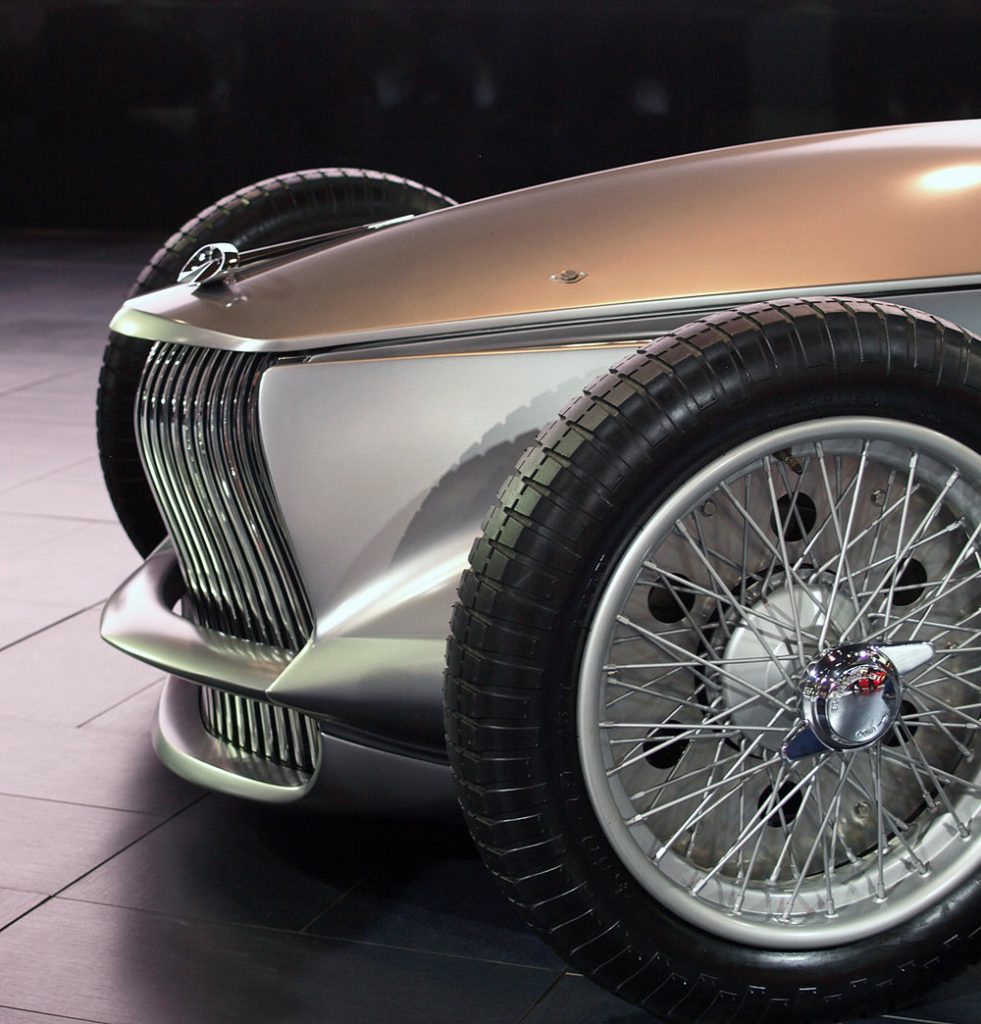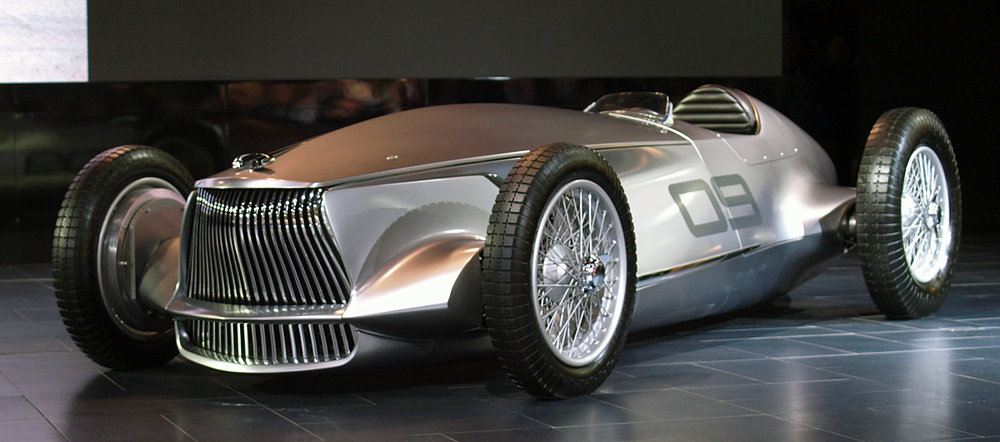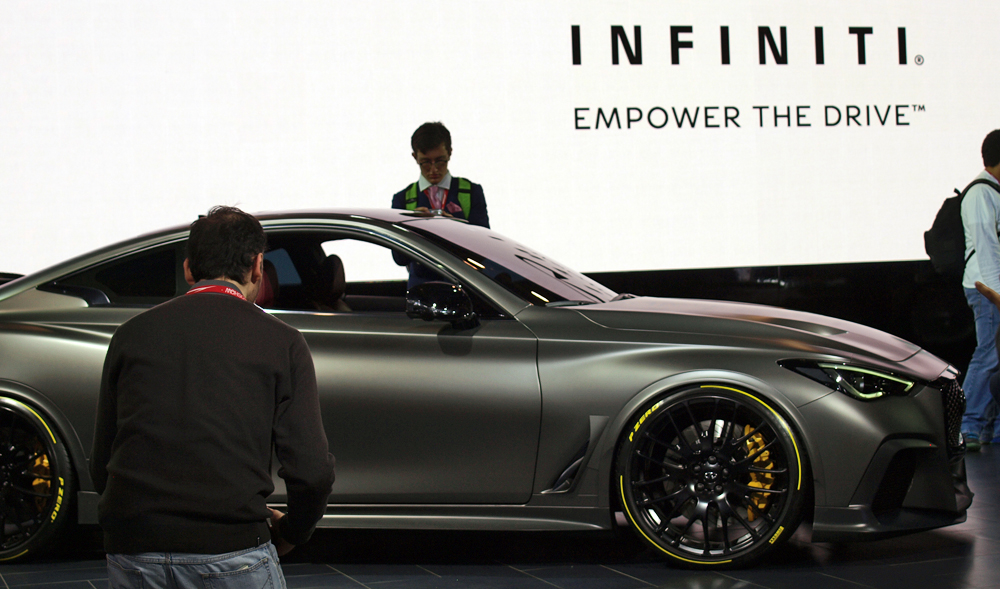At this January’s North American International Auto Show, the Infiniti Q Inspiration concept vehicle – featured at the top of Motor Trend’s “Sexiest Cars” after-show list – was a hint at the direction Karim Habib will steer the automaker’s new design language.
Written by Popi Bowman
Images by Popi Bowman
Now that you’ve settled into your new job, what changes have you started making?
What we’ve been doing is basically trying to build on some of the things that, particularly, the Prototype 9 started. I guess the most important thing for me is to try and get the best out of the team, and the team has managed with the Prototype 9 to create something with a very strong character. At the same time, though, it’s a very clear design language – pure, one could almost say, and that’s something we definitely want to build on. I really would like to push the brand further in that direction, so that’s why I think my personal expectations fit very well with the brand.
In working to “evolve” the brand, how do you plan to maintain a clear line between Infiniti and its luxury competitors?
There are a few things that are very clearly Infiniti, in my opinion. The brand has actually quite a fascinating history of talking about things besides the actual machines. So, yes, we talk about the VC-Turbo (variable compression turbo engine), which is an incredible technical accomplishment – but we also talk about the human aspect of the brand. The first ad ever created for Infiniti showed birds flying, with a narrator talking about how engineers in Japan were inspired by nature to create a better product for humans. I still think that’s an important part of the character of the brand: to create things that improve the lives of the consumer. Whether it is when you’re at a dealership and you feel like you’re being taken care of, or when you sit in a car and the way the ergonomics have been designed, it also gives you the feeling that you’re being taken care of, that you come before the actual machine – and I think that’s really the right way to do industrial design.
Of course, we have now officially announced we are going to be an EV company by 2021, which allows us to focus on things that not only the whole car industry, but the whole world is moving towards. And for me as a designer, I completely welcome that because it allows us to redefine what a car stands for, redefine how a car looks, redefine how you sit in a car, the space, the interior – all of that is shifting.


How do you feel about autonomous vehicles?
I’m totally on board because I do think it’s a great thing when you don’t have to drive, or let’s say you don’t want to because you’re in traffic or you’re stressed or you’re too tired. You still have to keep a certain focus on the road – one day it won’t be necessary – but with the technologies that we already offer, I do think it improves your life, so I’m all for that. But what I find interesting is also the way cars feel, what kind of feedback they give you when we drive them. I think there’s going to be room in the automotive world for both, and I actually think it will be even more extreme. For example in Tokyo, during the week people either take the train or you see these tiny, utilitarian cars but on the weekend, you see everything Italian and with a V10 or a V12 – there’s really a lot of supercars, so it’s a complete split.
What cars did you first fall in love with, that inspired you to enter the industry?
As a teenager, I always loved the original Lamborghini Countach – the first, minimalist one, it’s a milestone in automotive design. But then later a few cars marked me, one was a show car by Gia for Ford, the Gia Focus – it was a real breakthrough at the time, an asymmetrical car that almost looked like an aquatic animal, and inside it had wooden floors. It was exceptionally artistic, and for me it was one of the first cars that blended the line between art and car design in a modern way.
At Infiniti, are you going to be able to go a little “wild” with your designs?
We actually have a lot of opportunities to go wild. Infiniti is a brand that understands that we need to be daring to move forward, to make our place in the automotive luxury world, so there’s a lot of opportunities for us, as designers, to do that. And also the creative culture at Nissan and Infiniti is very free, and that’s fantastic. There are very different company cultures but what is totally new to me, and I find super interesting, is Asia, and particularly Japan, has a very different understanding of how to work with materials and how the relationship is with materials and ornament, and the overall frame – there’s not such a clear hierarchy as there is the way I’ve learned it so far. For me, it’s a completely new way of working or of considering good design that I totally relish and want to understand and take in. For example, what do you use from the qualities of these materials – that’s what’s interesting, the touch, the texture.


Personally, do you value a car for its horsepower and its beauty, or for its efficiency and comfort?
If we’re going to talk about human-centric, we have to mean what we’re saying, right? So, comfort is very important. Depending on how you say it, comfort doesn’t sound very sexy, but when you talk about well-being, to me that’s actually veryattractive. I want to interact with objects that hopefully improve my well-being, so good design is not just about the materials – it’s about the space, how you live in that space, how the movement is – all of that’s super important. I think as designers we need to think not just about style and form and shape. For example, residential architecture in Japan is mind boggling – it’s truly, truly innovative in a sense of the word that I’ve rarely seen being so relevant and accurate. I’m still trying to get my head around it.
In comparing car design to architecture, do you think cars are catching up or vice versa?
It depends which aspect you’re looking at. A few of my friends are architects, and some are also car fans, so we have quite a lot of discussions about that. One of them said, ‘You know, we still glue pieces of stone together, and that’s not really evolution,’ so you could argue in terms of technology, when it comes to cars we’re pretty impressive. But on the other hand, when you look at architecture, and you look at how some architects build with the properties of the materials – and they change the material to change its shape – and how you let light through, and how you work with negative space, I think we have a lot to learn from architecture.
Ultimately, for every car, it’s really important to me that what we design is an authentic statement. Good design brings the intrinsic values of the product to the surface, whether it’s a house or a toothbrush or a car.








